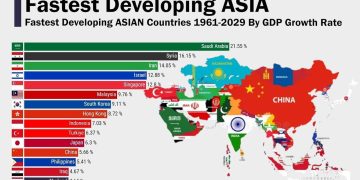In recent years, a striking divergence in valuation levels between U.S. equities and European equities has captured the attention of investors worldwide. While U.S. stocks have generally commanded higher price-to-earnings (P/E) multiples and delivered stronger total returns, European stocks have tended to trade at more subdued valuations with relatively lackluster performance. This valuation gap prompts a critical question: is the divergence driven primarily by fundamental institutional advantages inherent to the U.S. market, or does it mainly reflect cyclical timing differences between the two regions? Understanding the forces behind this split is vital for global investors aiming to optimize portfolio allocation and grasp the underlying dynamics shaping equity markets on both sides of the Atlantic.
Institutional Advantages Driving U.S. Equity Premium
A dominant narrative attributes the U.S. equity premium to structural and institutional strengths that give American companies and capital markets a sustainable edge.
Innovation and Technology Leadership: The U.S. is home to the world’s technology giants — Apple, Microsoft, Amazon, Alphabet, and others — which dominate global market capitalization and innovation. These companies benefit from cutting-edge research and development, network effects, and scalable business models that translate into high profit margins and consistent earnings growth. This tech dominance attracts investor enthusiasm and supports elevated valuations.
Depth and Liquidity of Capital Markets: U.S. financial markets are among the largest and most liquid globally, offering a broad investor base, sophisticated market infrastructure, and efficient price discovery mechanisms. The well-developed venture capital and private equity ecosystems further foster innovation by enabling startups to access growth capital, fueling a vibrant IPO market and sustained public company success.
Corporate Governance and Regulatory Framework: The U.S. corporate governance environment provides relatively strong shareholder protections, transparency, and regulatory clarity. These features reduce informational asymmetry, enhance investor confidence, and facilitate capital formation.
Robust Domestic Consumer Market: The large, affluent American consumer base underpins stable revenue streams for many companies. High consumer spending power and a culture of innovation-driven entrepreneurship contribute to a favorable business environment.
Collectively, these factors build a compelling institutional foundation for U.S. equities, justifying a premium valuation and supporting their resilience through economic cycles.
Cyclical Timing and Economic Factors Impacting Valuations
Alternatively, some analysts argue the valuation gap largely reflects differences in the economic cycle phases and sector composition rather than permanent structural advantages.
Divergent Economic Growth Paths: The U.S. economy has generally exhibited stronger growth and more dynamic labor markets compared to the eurozone, which has faced sluggish productivity, demographic challenges, and political fragmentation. Stronger growth expectations in the U.S. translate to higher projected corporate earnings and, consequently, higher equity valuations.
Monetary Policy Divergence: The Federal Reserve has historically moved faster and more decisively in both hiking and cutting interest rates, directly impacting equity valuations by influencing discount rates and capital costs. The ECB has taken a more cautious and gradual approach, reflecting the heterogeneous economic conditions across member states, which in turn has influenced European equity performance.
Sectoral Composition Differences: European stock indices are heavily weighted toward cyclical sectors such as financials, energy, and industrials, which are more sensitive to economic slowdowns and commodity price swings. Conversely, the U.S. market is heavily weighted in growth and technology sectors, which tend to be less cyclical and more insulated from near-term economic fluctuations, attracting premium valuations especially in low-rate environments.
Currency Volatility and Exchange Rate Effects: Fluctuations between the U.S. dollar and euro can impact returns for global investors and corporate earnings when translated into home currencies, further contributing to valuation discrepancies.

Additional Considerations: Political and Fiscal Factors
Beyond pure economic and institutional factors, political stability and fiscal policies also play a role. The U.S. benefits from relatively stable federal governance and fiscal stimulus tools that can support growth during downturns. The European Union, with its complex multi-country governance and budgetary constraints, often faces challenges in enacting swift fiscal responses, which can weigh on investor sentiment.
Looking Ahead: Convergence or Continued Divergence?
Whether the valuation gap narrows depends on several key dynamics:
- Europe’s Structural Reforms: Continued progress on enhancing innovation ecosystems, corporate governance, and capital markets integration could help European equities command higher valuations.
- Economic Cycle Synchronization: Should Europe experience a stronger cyclical upswing while the U.S. slows, valuation multiples could converge.
- Global Monetary Policy: Coordinated easing or tightening by the Fed and ECB may also influence relative valuations by affecting risk sentiment and capital flows.
- Technological Catch-up: As European companies invest more heavily in digital transformation and sustainability, sectoral shifts could reduce the premium assigned to U.S. tech.
Conclusion
The divergence in valuations between U.S. and European equities is driven by a complex interplay of both enduring institutional advantages and cyclical timing differences. The U.S. market benefits from a superior innovation ecosystem, deeper capital markets, and stronger corporate governance that support premium valuations. However, economic growth patterns, monetary policy approaches, and sector compositions also significantly influence relative performance.
For investors, understanding these underlying factors is essential to navigate portfolio allocation decisions effectively. While the U.S. may continue to enjoy structural benefits supporting higher valuations, cyclical shifts and Europe’s reform momentum could create compelling opportunities to capitalize on valuation gaps. In a dynamic global environment, flexibility and a nuanced view of both structural and cyclical forces will be key to successful investing across these major equity markets.





































